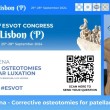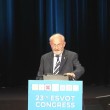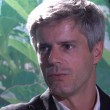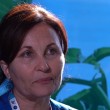Prof. Dr. Herman A.W. Hazewinkel
DVM, PhD, Dipl. ECVS
Faculty of Veterinary Medicine
Department of Clinical Sciences of Companion Animals
Yalelaan 8
3584 CM Utrecht, The Netherlands
Please insert you College and year as well as your career since graduating to date
H.A.WH....I graduated at Utrecht University in the Netherlands in January 1976. I started in private practice (first doing Foot&Mouth disease vaccination in bulls(!) and later on in companion animal practice in a small town in The Netherlands. As a veterinary student I followed a AO course in Davos and wrote a student thesis about plate fixation of (air sack containing) humeral fractures in (research) chicken. Since there was a lack of residents in orthopedics in June 1976, I was asked to come to join the University Clinic based on my interests in orthopedics. First I followed an internship and than completed a specialization, which was far before the ECVS existed. In 1985 I completed my thesis on Calcium and bone metabolism in growing Great Danes. Later on I participated in studies of others including two other ECVS diplomates (Dr. R.C. Nap and Dr M. Tryfonidou) and gathered knowledge about all different influences of nutrition on skeletal development. In addition to passing the ECVS exam in 1993, I was also invited to become ECVCNutrition diplomate, allowing me to supervise trainings of both ECVS and ECVCN residents. In addition this double-Dipl allowed me to put emphasis on the influence of nutrition in the surgeons world and to orthopedic diseases in the nutrition world, both in publications and presentations as in student education. In 1986 I became associated professor and in 1998 full professor at the Dept. Clinical Sciences of Companion Animals, section orthopedics- neurosurgery-dentistry. I was involved in the credential committee of the ECVS, the examination and education committee of the ECVCN, and the organizing committee of ESVOT-congresses and the national companion animal congress Voorjaarsdagen, and I'm involved in the International Elbow Working Group.
G.S.-S. can you recall when you decided to become a veterinarian an did anyone inparticular influence that choice?
As a 6-year old I was very fond of animals, despite the fact that my mother was very afraid of animals. Born and raised in Amsterdam I had only few possibilities to become in contact with animals: I trapped (to lured??) dogs in my house during holidays, where they stayed for some days; and I raised birds fallen from their nest, but that was about it. My parents send me for summer holidays over to a traditional farmer family with children of my age, where I helped to feed the calves, gathering the eggs, and helped milking the cows. The local veterinarian invited me to join him at his daily consultations, seeing different farms the whole day long, and that is what I did all holidays ever since. That veterinarian was my role model to become a veterinarian myself, only during my studies I decided to switch from farm animal to companion animal veterinary medicine.
G.S-S What led you to become interesded ikn orthopaedics?
H.AW.H. During the lectures of Prof. Meutstege at the vet school I became impressed by his approach of traumatized patients and by the possibilities to heal them. Although not regularly at that time for students, Prof Meutstege supported me to subscribe for an AO course in Switzerland. After my return I was supported by the professor at the poultry department (who provided me with 12 chickens) and the Companion Animal Department (which allowed my to perform at evenings and weekends the plate fixation of air-sack containing humeral fractures in birds in the operation theatre, to perform the study on fracture repair in these research animals. This provided me with some experience and a certain reputation, which was remembered when a resident in orthopedics was looked for. During my residency I was allowed to spend a 3 month-period at Michigan State University to follow a course at the orthopedic section of Prof. W.O. Brinker and his team. After my return Prof Rijnberk coached me how to perform research in an academic way. Although I named only a few persons which played a crucial role in my career, although that does not say that this list is complete: I learned a lot from the interaction with many colleagues during daily activities, which I still enjoy greatly.
G.S.-S.Is there a piece of research of which you are particularly proud?
I'm proud that editors of the major veterinary text books where the nutritional influence on orthopedic diseases is discussed, have invited me to share my experiences and the results of research of myself and my co-workers in this area. I started to investigate the influence of high calcium intake on skeletal development; although the effects were hypothesized by Hedhammar in 1974, the results of my study were not believed by many. We could, however, demonstrate in more studies that not protein or carbohydrate were involved with these developmental diseases like osteochondrosis (including OCD and radius curvus syndrome) but that high calcium intake at young age was causative, together with the involvement of calciotropic hormones calcitonin and vitamin D. The diet-related radius curvus syndrome in young, large breed dogs was diagnosed weekly at the poli clinic in the late '70-ies , and is hardly seen anymore due to adaptation of the large dog-food companies. Before my retirement I hope to help to solve at least one hereditary orthopedic disease, but that it not so easy either. What I'm really proud at, are the results accomplished by the members of my group Drs Meij, Theyse and Tryfonidou and numerous PhD students who, each at their own area, developed highly specialized surgical techniques and publish completed studies in sophisticated research journals, all grace to hard working and dedication to the profession.
















